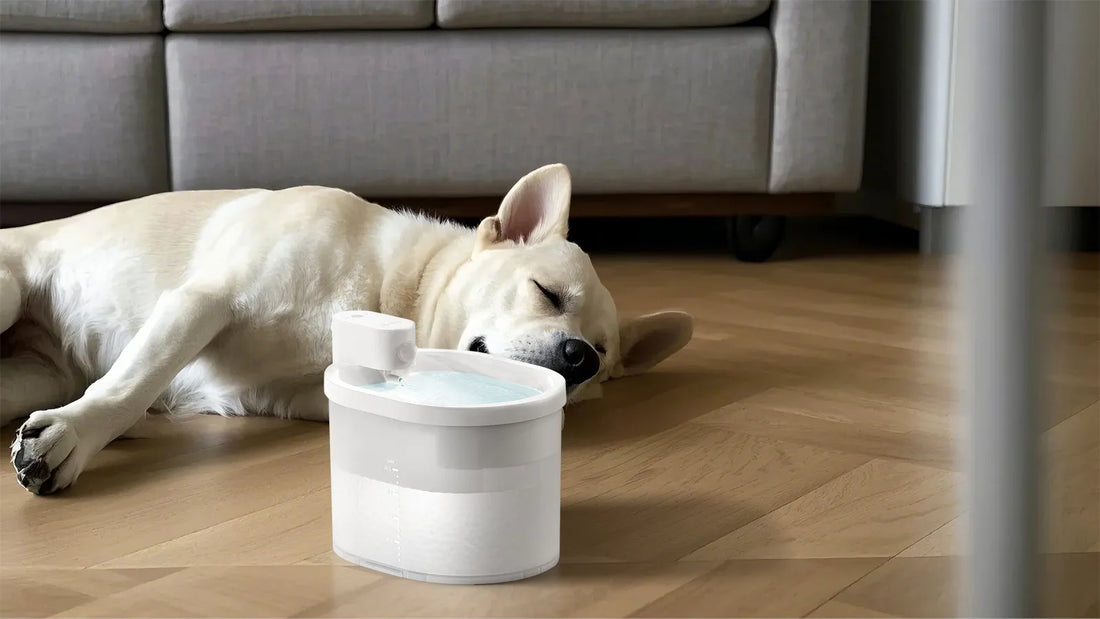If you've ever found yourself wondering, 'My dog won't drink from his bowl,' you're not alone. This common issue can be frustrating for pet owners and concerning for your dog's health. Understanding the underlying causes and exploring effective solutions can help you address this problem and ensure your dog stays hydrated.
Possible Reasons Why Your Dog Won't Drink From His Bowl
There are several reasons why your dog might refuse to drink from his bowl. Identifying the root cause is the first step toward finding a solution.
1. The Bowl Itself
Sometimes, the issue lies with the bowl. Dogs can be particular about the material, size, or shape of their bowls. For example, some dogs dislike metal bowls because they can be noisy or reflective, while others might find plastic bowls unappealing due to lingering odors or tastes.
2. Water Quality
Your dog might be refusing to drink because the water in his bowl isn't fresh or clean. Dogs have a keen sense of smell and taste, and they can detect impurities or stale water. Ensure that you change the water frequently and clean the bowl regularly to prevent bacteria buildup.
3. Location of the Bowl
The placement of the bowl can also affect your dog's willingness to drink. If the bowl is in a noisy or high-traffic area, your dog might feel uncomfortable or distracted. Conversely, if it's in a dark or secluded spot, he might avoid it altogether.
4. Health Issues
In some cases, a refusal to drink could indicate an underlying health problem. Dental issues, mouth pain, or gastrointestinal discomfort might make drinking from a bowl unpleasant for your dog. If you suspect a health issue, consult your veterinarian for a thorough examination.
5. Behavioral Factors
Behavioral issues, such as anxiety or stress, can also lead to a reluctance to drink. Changes in the household, new pets, or even a change in routine can affect your dog's behavior and drinking habits.
Practical Solutions to Encourage Your Dog to Drink
Once you've identified the potential cause, you can take steps to encourage your dog to drink from his bowl.
1. Experiment with Different Bowls
Try offering your dog bowls made from different materials, such as ceramic, stainless steel, or glass. You can also experiment with various shapes and sizes to see which one your dog prefers. Some dogs might enjoy using a fountain-style bowl that keeps the water moving.
2. Keep the Water Fresh and Clean
Make sure to change the water in your dog's bowl at least once a day, and clean the bowl regularly to remove any residue or bacteria. If your tap water has a strong taste or odor, consider using filtered water.
3. Adjust the Bowl's Location
Place the bowl in a quiet, accessible area where your dog feels comfortable. Avoid placing it near loud appliances or in high-traffic zones. If your dog spends time in multiple areas of the house, consider placing bowls in several locations.
4. Monitor Your Dog's Health
If you suspect that a health issue is causing your dog's reluctance to drink, schedule a visit to the veterinarian. Addressing any underlying medical conditions can help resolve the problem and improve your dog's overall well-being.
5. Address Behavioral Issues
If stress or anxiety is affecting your dog's drinking habits, try to identify and address the source of the issue. Providing a calm and stable environment, along with plenty of positive reinforcement, can help your dog feel more at ease.
Additional Tips to Keep Your Dog Hydrated
In addition to addressing the immediate issue, there are several ways to ensure your dog stays hydrated, even if he's reluctant to drink from his bowl.
1. Offer Wet Food
Wet food contains a higher moisture content than dry kibble, which can help supplement your dog's water intake. If your dog enjoys wet food, consider incorporating it into his diet.
2. Add Water to Dry Food
You can also add water to your dog's dry food to increase his hydration. This can make the food more appealing and easier to eat, especially for older dogs or those with dental issues.
3. Provide Ice Cubes
Some dogs enjoy chewing on ice cubes, which can be a fun and refreshing way to encourage hydration. Just be sure to supervise your dog to prevent choking or dental damage.
4. Use Flavor Enhancers
Adding a small amount of low-sodium broth or a splash of water from canned tuna or chicken to your dog's water can make it more enticing. Be sure to use these enhancers sparingly to avoid overloading your dog with sodium.
5. Encourage Play with Water
Some dogs are more likely to drink if they're playing with water. Consider using a kiddie pool, sprinkler, or water toys to make hydration a fun and engaging activity.
By understanding the reasons behind your dog's reluctance to drink and implementing these practical solutions, you can help ensure that your furry friend stays hydrated and healthy. Remember, every dog is unique, so it may take some trial and error to find the approach that works best for your pet. With patience and persistence, you can turn 'My dog won't drink from his bowl' into a problem of the past.













